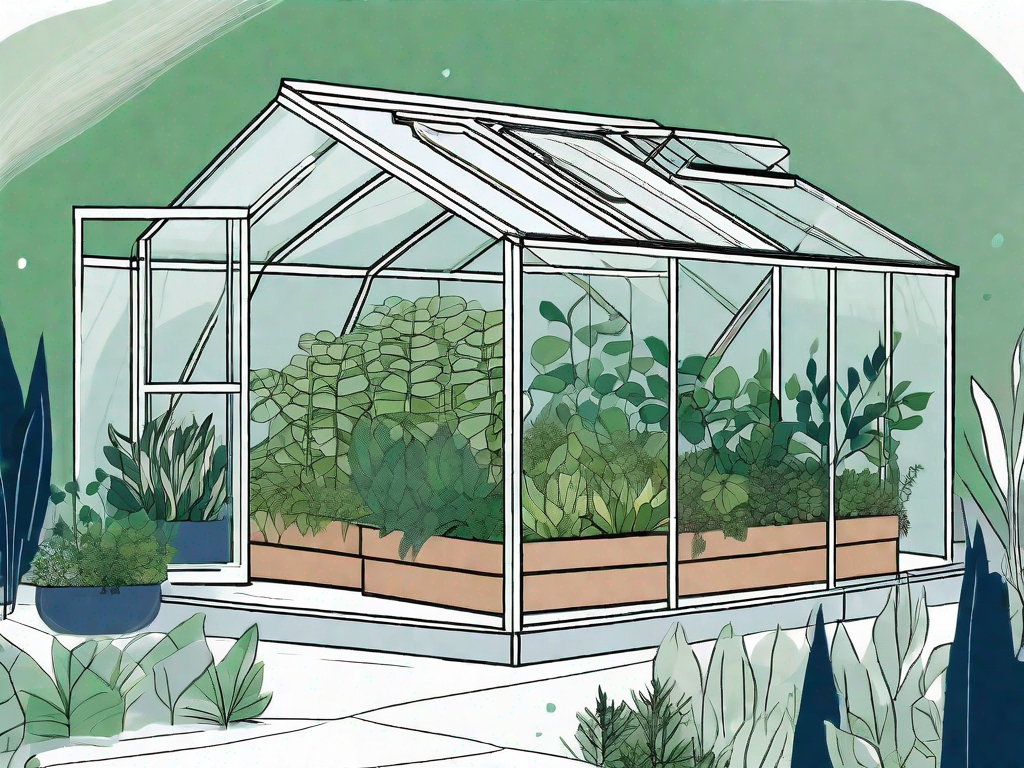Growing your own vegetables can be a rewarding and cost-effective way to ensure a bountiful harvest. With a little knowledge and some strategic planning, you can maximize your vegetable garden yield and enjoy a plentiful supply of fresh, homegrown produce. In this article, we will explore various factors that can impact your garden’s potential, tips for choosing the right vegetables, effective gardening techniques, and ways to enhance soil fertility.
Understanding Your Garden’s Potential
Before diving into the details of maximizing your vegetable garden yield, it is important to understand your garden’s potential. This involves evaluating your garden’s soil quality, assessing sunlight exposure, and determining watering needs.
Evaluating Soil Quality
The foundation of a healthy and thriving vegetable garden is good soil. Start by testing your soil’s pH level to ensure it falls within the optimal range for vegetable growth. You can easily purchase a soil testing kit from your local garden center or use the services of a professional. Additionally, consider the soil structure and texture. Loamy soil, which is a mixture of sand, silt, and clay, is usually ideal for vegetable gardening as it retains moisture while allowing for adequate drainage.
To improve soil quality, add organic matter such as compost or well-rotted manure. Organic matter helps increase soil fertility, improves water-retaining capacity, and enhances nutrient absorption. Work the compost or manure into the soil before planting to ensure it is evenly distributed.
Assessing Sunlight Exposure
The amount of sunlight your garden receives is crucial for maximizing vegetable yield. Most vegetables require at least six to eight hours of direct sunlight each day to thrive. Observe your garden throughout the day to identify areas that receive the most sun and areas that are shaded. Plan your vegetable layout accordingly, placing sun-loving crops in the sunniest spots and those that tolerate partial shade in shadier areas.
If your garden lacks sufficient sunlight, consider utilizing raised beds or container gardening. These methods allow you to position your vegetables in the sunniest areas of your yard or even on a patio or balcony.
Determining Watering Needs
Proper watering is essential for healthy vegetable plants. Different vegetables have varying water requirements, but as a general rule, aim to keep the soil consistently moist, but not saturated. Overwatering can lead to root rot and other plant diseases, while underwatering can cause stunted growth and reduced yields.
Consider installing an irrigation system or using drip irrigation to ensure your plants receive adequate water without wasting any. Mulching around your plants can also help retain moisture in the soil and prevent water evaporation. When watering, focus on the base of the plants to avoid wetting the leaves, which can promote the spread of fungal diseases.
Choosing the Right Vegetables
Now that you have a good understanding of your garden’s potential, it’s time to choose the right vegetables that are well-suited to your growing conditions.
Seasonal Vegetable Selection
One of the keys to maximizing your vegetable garden yield is planting vegetables that thrive in the current season. Different vegetables have different temperature and sunlight requirements. Research the planting seasons for various vegetables in your region and choose those that are suitable for the current climate. For example, during the warmer months, you may want to plant tomatoes, cucumbers, and peppers, while in cooler seasons, root vegetables like carrots and beets may be a better choice.
High-Yield Vegetable Varieties
To get the most out of your vegetable garden, consider planting high-yield vegetable varieties. These varieties have been specifically bred to produce abundant crops. Look for varieties that are labeled as “high-yield” or “prolific” to ensure you are maximizing your garden’s potential. Some examples of high-yield vegetables include zucchini, bush beans, and cherry tomatoes.
Companion Planting Strategies
Companion planting is the practice of growing certain plants together to provide mutual benefits, such as pest control, improved pollination, and enhanced nutrient uptake. By strategically combining different plant species, you can create a harmonious ecosystem in your vegetable garden that promotes healthier plants and higher yields.
For example, planting marigolds near your tomato plants can help repel pests, while growing herbs such as basil or dill alongside your vegetables can attract beneficial insects that prey on harmful pests. Research companion planting charts or consult gardening resources to learn about effective companion planting strategies for different vegetables.
Implementing Effective Gardening Techniques
Once you have chosen the right vegetables for your garden, it’s important to implement effective gardening techniques to ensure optimal growth and yield.
Proper Plant Spacing
Giving your vegetable plants adequate space to grow is crucial for maximizing yield. Each vegetable has specific spacing requirements, which should be followed to avoid overcrowding. Overcrowding can lead to competition for resources, decreased air circulation, and increased susceptibility to diseases and pests.
Refer to seed packets or gardening guides to determine the recommended spacing for each vegetable. As a general guideline, most vegetables should be spaced at least 12 to 18 inches apart in rows, with rows spaced 2 to 3 feet apart. When in doubt, give your plants extra room to ensure they have enough space to thrive.
Pruning and Harvesting Methods
Regular pruning and proper harvesting methods can help improve yield and prolong the productivity of your vegetable plants. Pruning involves removing any dead or diseased plant parts to prevent the spread of diseases and improve airflow. It also helps redirect the plant’s energy to essential growth areas.
When it comes to harvesting, timing is key. Each vegetable has an optimal stage for harvesting, and waiting too long or harvesting too early can affect flavor and yield. Research the ideal harvesting times for different vegetables and harvest them at their peak to maximize their yield and taste. Be careful not to damage the plants or neighboring fruits and vegetables while harvesting.
Pest Control and Prevention
Pests can quickly decimate a vegetable garden if left unchecked. Implementing pest control and prevention measures is crucial for maximizing yield. Start by regularly inspecting your plants for the presence of pests. Hand-picking larger pests, such as caterpillars, can help reduce their populations. Encourage beneficial insects like ladybugs and lacewings by planting flowers in or around your garden.
If pests become a persistent problem, consider using organic insecticides or traps that target specific pests. Always read and follow the instructions carefully to ensure effective and safe pest control.
Enhancing Soil Fertility
In addition to effective gardening techniques, enhancing soil fertility is essential for maximizing your vegetable garden yield in the long run.
Organic Fertilizers and Their Benefits
Switching to organic fertilizers can greatly benefit your vegetable garden. Unlike synthetic fertilizers, which provide an immediate nutrient boost but can harm beneficial soil organisms, organic fertilizers release nutrients slowly and improve the overall soil structure. This leads to healthier plants with increased disease resistance and higher yields.
Common organic fertilizers include compost, worm castings, seaweed extracts, and bone meal. These fertilizers provide a rich source of essential nutrients and help improve soil fertility over time. Apply them according to the instructions and avoid over-fertilizing, as excessive nutrients can also be detrimental to plant growth.
Composting Basics
Composting is an excellent way to recycle kitchen scraps and yard waste while enriching your garden’s soil. Start by setting up a compost bin or pile in a convenient location. Layer alternating green materials, such as vegetable scraps and grass clippings, with brown materials like dried leaves and shredded paper. Turn the pile periodically to ensure proper decomposition.
Within a few months to a year, the compost will transform into nutrient-rich humus that can be incorporated into your garden soil. Add compost to your garden beds before planting or use it as a top dressing around existing plants. Compost improves soil fertility, water retention, and overall plant health, leading to increased vegetable yields.
Crop Rotation and Its Importance
Crop rotation involves changing the location of different vegetable crops each year to prevent the buildup of pests and diseases in the soil. Rotating crops can help break disease and pest cycles, improve soil health, and promote a more balanced nutrient distribution.
Plan your crop rotation based on the plant families and their specific nutrient requirements. A common crop rotation practice is to divide your garden into four sections, each dedicated to a different plant family. Rotate the crops within these sections annually to ensure a healthy, productive vegetable garden year after year.
By understanding your garden’s potential, choosing the right vegetables, implementing effective gardening techniques, and enhancing soil fertility, you can maximize your vegetable garden yield and enjoy a bountiful harvest. With a little effort and careful planning, you’ll be able to savor the taste of fresh, homegrown produce straight from your garden.



